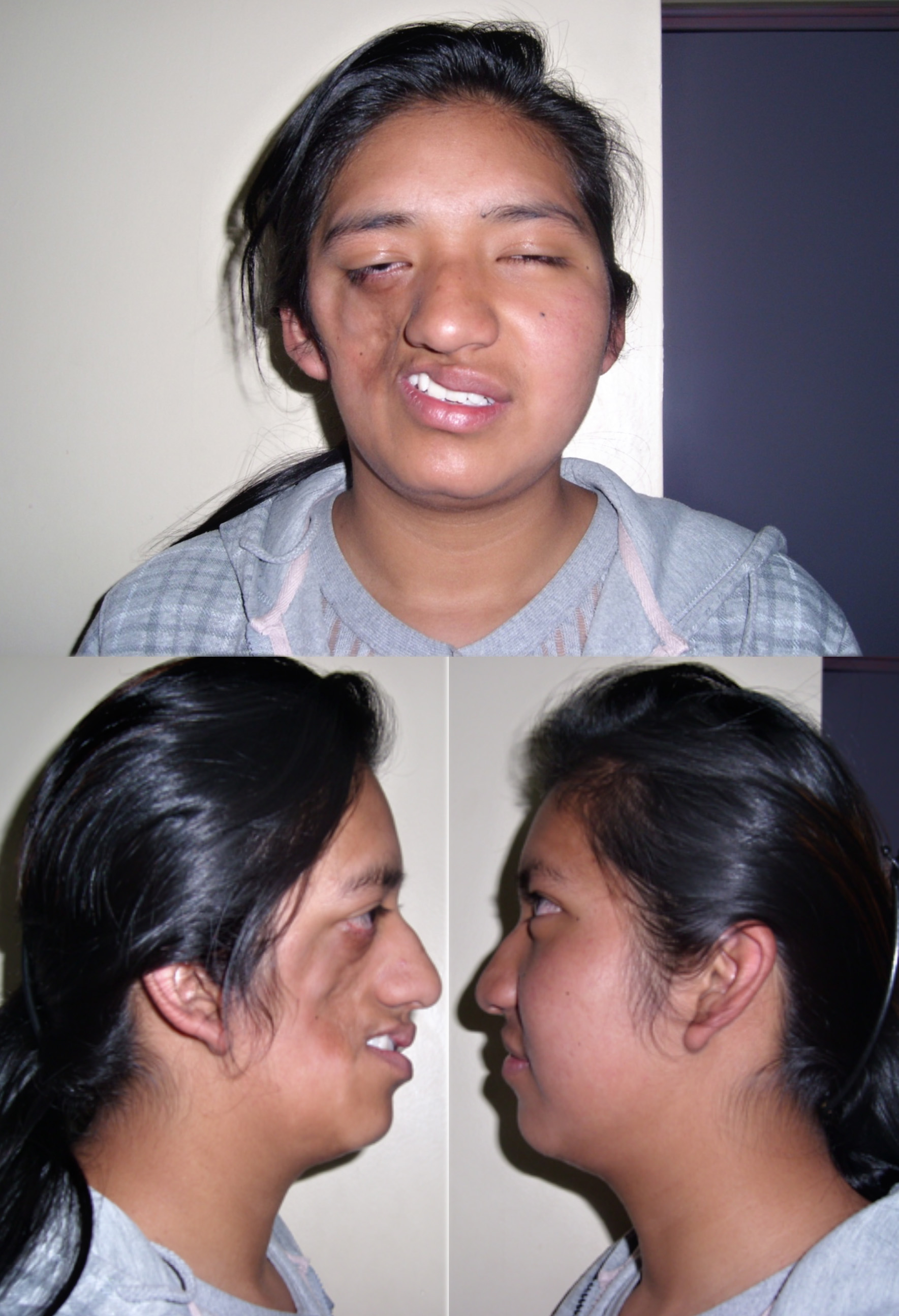Parry–Romberg syndrome is a rare disorder characterized by slowly progressive degeneration (atrophy) of the soft tissues of half of the face (hemifacial atrophy). Some individuals may experience distinctive changes of the eyes and hair; and neurological abnormalities including episodes of uncontrolled electrical disturbances in the brain (seizures) and episodes of severe pain in tissues supplied by the fifth cranial nerve (trigeminal nerve) including the mouth, cheek, nose, and/or other facial tissues (trigeminal neuralgia). Symptoms and physical findings associated with Parry–Romberg syndrome usually become apparent during the first or early during the second decade of life. In rare cases, the disorder is apparent at birth. The majority of individuals with Parry–Romberg syndrome experience symptoms before the age of 20 years.
In affected individuals, initial facial changes usually involve the tissues above the upper jaw (maxilla) or between the nose and the upper corner of the lip (nasolabial fold) and progress to involve the angle of the mouth, the areas around the eye, the brow, the ear, and/or the neck. Progressive tissue wasting can be on either side of the face. In some rare cases, the atrophy may be bilateral. Affected areas may demonstrate shrinkage and atrophy of tissues beneath the skin (subcutaneous tissue), the layer of fat under the skin (subcutaneous fat), and underlying cartilage, muscle, and bone.
In addition, the skin overlying affected areas may become darkly pigmented (hyperpigmentation) with, in some cases, areas of hyperpigmentation and patches of unpigmented skin (vitiligo). Many individuals also experience atrophy of half of the upper lip and tongue as well as abnormal exposure, delayed eruption, or wasting of the roots of certain teeth on the affected side. Symptoms of Parry–Romberg syndrome may begin at any age. Facial atrophy may cease abruptly, or progress slowly and then become stationary. If the atrophy becomes stationary, it may reactivate later in life. In other cases, the atrophy may progress indefinitely. In some cases, hair abnormalities may also appear on the affected side, including whitening (blanching) of the hair as well as abnormal bald patches on the scalp and loss of eyelashes and the middle (median) portion of the eyebrows (alopecia).
In addition, some individuals with Parry–Romberg syndrome may also experience associated neurological abnormalities. These may include severe headaches that last for extended periods of time and may be accompanied by visual abnormalities, nausea, and vomiting (migraines); facial pain (trigeminal neuralgia); and/or periods of uncontrolled electrical disturbances in the brain (seizures) that usually are characterized by rapid spasms of a muscle group that spread to adjacent muscles (contralateral Jacksonian epilepsy). The range and severity of associated symptoms and findings may vary from case to case. In most cases, Parry–Romberg syndrome appears to occur randomly for unknown reasons (sporadically)





No comments:
Post a Comment